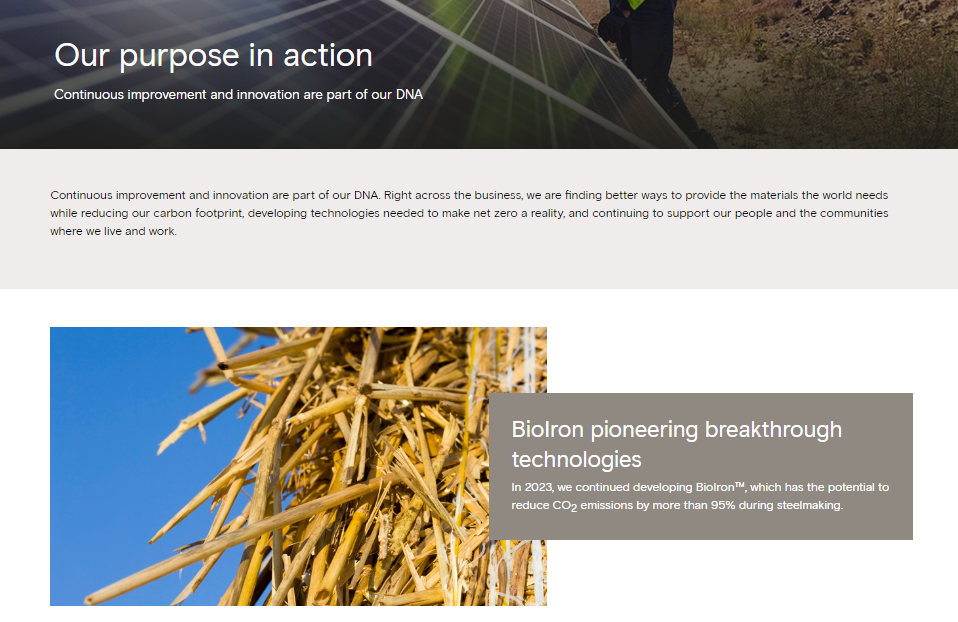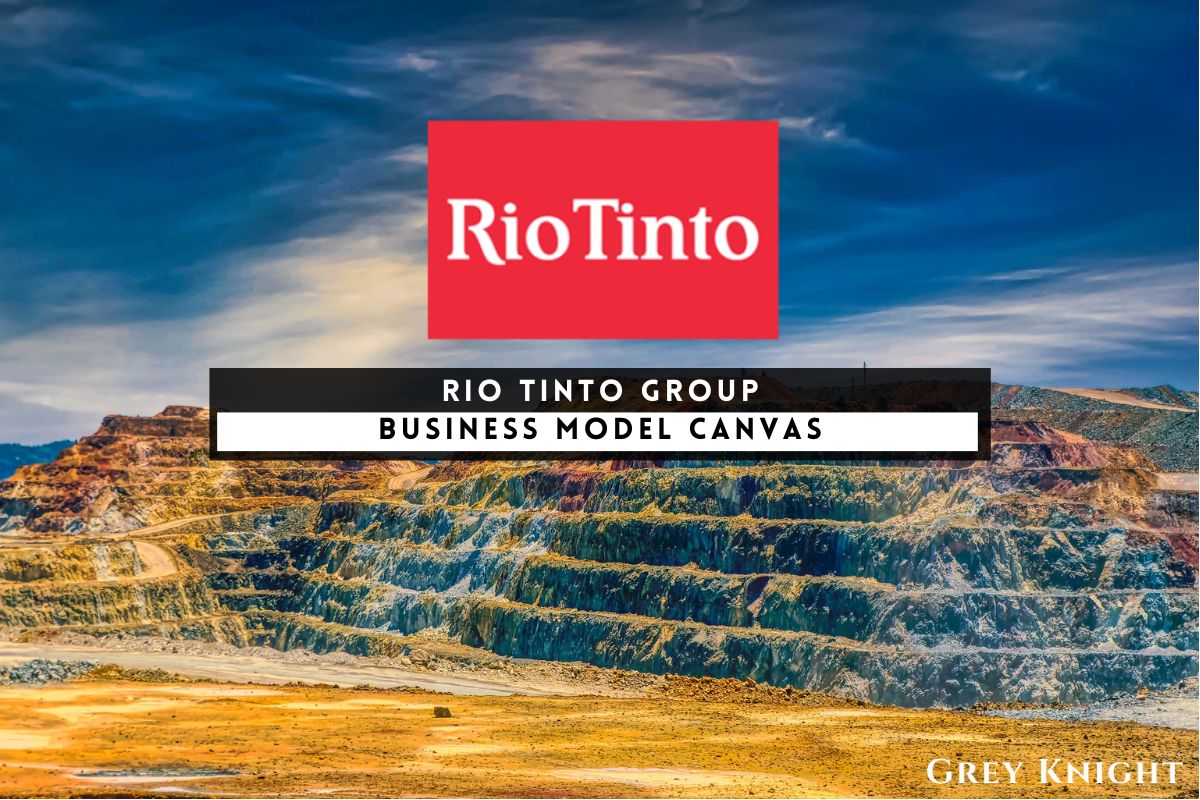Table of Contents
ToggleA brief history of Rio Tinto
The Rio Tinto Group is a British-Australian multinational mining and metal corporation founded in 1873. The company was originally formed to mine the copper deposits along the Rio Tinto River in southwestern Spain. In the early years, it was primarily focused on copper mining, but later expanded its operations to include iron ore, aluminum, and other metals.
Over the years, Rio Tinto has grown through a series of mergers and acquisitions, expanding its operations to various countries around the world, including Australia, Canada, and the United States. The company has become one of the largest and most diverse mining companies in the world, with a presence in several continents.
Rio Tinto has faced various challenges throughout its history, including labor disputes, environmental controversies, and fluctuating commodity prices. Despite these challenges, the company has continued to thrive and remain a major player in the global mining industry.
In recent years, Rio Tinto has made efforts to improve its sustainability and environmental practices, as well as its relationships with indigenous and local communities in the areas where it operates. As of today, Rio Tinto remains a leading force in the global mining and metals industry, with a focus on innovation, safety, and responsible business practices.
Who Owns Rio Tinto?
Rio Tinto Group is owned by a variety of shareholders, including institutional investors, individual investors, and mutual funds. As of the latest available information, the top 10 shareholders of Rio Tinto Group are as follows:
1. BlackRock, Inc. – 5.77%
2. Vanguard Group, Inc. – 5.33%
3. Norges Bank Investment Management – 3.90%
4. Capital Research & Management Co. – 3.31%
5. State Street Corp. – 1.87%
6. Legal & General Investment Management Ltd. – 1.57%
7. T. Rowe Price Associates, Inc. – 1.48%
8. Mitsubishi UFJ Financial Group, Inc. – 1.43%
9. First Eagle Investment Management, LLC – 1.37%
10. Capital Group Companies, Inc. – 1.24%
These entities hold significant ownership stakes in Rio Tinto Group, making them influential in the company’s operations and decision-making processes.
Rio Tinto Mission Statement

The Rio Tinto Group’s mission statement is to create value through the discovery, development, and operation of natural resources in a sustainable and responsible manner. The company aims to deliver superior returns to its shareholders, while also providing long-term benefits to the communities in which it operates and minimizing its impact on the environment. Rio Tinto is committed to conducting its business with the highest standards of integrity and ethical behavior, and to be a trusted partner and employer.
How Rio Tinto Makes Money?
Rio Tinto Group is a leading global mining and metals company with a strong business model that revolves around extracting and processing a variety of minerals and metals, such as iron ore, aluminum, copper, diamonds, and gold. The company makes money through the sale of these raw materials, as well as by providing various services within the mining industry. Rio Tinto generates its revenue stream from the sale of its products to customers in industries such as construction, infrastructure, automotive, and manufacturing. Additionally, the company also derives income from royalties, joint venture partnerships, and the provision of logistics and transportation services. Overall, Rio Tinto’s diverse revenue sources and vertically integrated business model allow it to maintain a stable and profitable income.
Rio Tinto’s Business Model Canvas
The Business Model Canvas is a strategic management tool that provides a visual overview of an organization’s key business activities. It helps to identify and understand the core elements of a company’s business model and how they interact with one another. The canvas is comprised of 9 key building blocks that help to define and analyze a company’s value proposition, customer segments, key activities, key resources and so much more.
Customer Segments:
- Rio Tinto Group’s customer segments include industries such as automotive, construction, infrastructure, and manufacturing.
- The company also targets global businesses, governments, and communities that rely on the supply of essential materials such as iron ore, aluminum, copper, diamonds, and minerals.
Value Propositions
- Rio Tinto Group offers high-quality natural resources and materials that are essential for the global economy.
- The company focuses on sustainable and efficient mining practices that minimize environmental impact and benefit local communities.
- Rio Tinto Group provides a reliable and secure supply chain for its customers, ensuring consistent delivery of materials.
Channels:
- The company uses a combination of direct sales, distribution partners, and digital platforms to reach its customers.
- Rio Tinto Group leverages its global network and physical infrastructure to ensure the efficient delivery of materials to its customers.
Customer Relationships:
- The company maintains strong relationships with its customers through continuous communication, regular engagement, and providing solutions to meet their specific needs.
- Rio Tinto Group focuses on long-term partnerships with its customers, aiming to provide value beyond the initial transaction.
Revenue Streams:
- Rio Tinto Group generates revenue through the sale of iron ore, aluminum, copper, diamonds, and other minerals to its diverse customer base.
- The company also earns revenue through royalties, joint venture interests, and investment returns.
Key Resources:
- The company’s key resources include its mining operations, mineral reserves, infrastructure, technology, and skilled workforce.
- Rio Tinto Group also relies on its strong relationships with local communities, governments, and industry partners.
Key Activities:
- The key activities of Rio Tinto Group include exploration, extraction, processing, and transportation of natural resources.
- The company also engages in research and development to innovate and improve its mining practices.
Key Partners:
- The company partners with suppliers, logistics companies, technology providers, and local communities to ensure the efficient and sustainable operation of its mining activities.
- Rio Tinto Group also collaborates with governments and industry organizations to address regulatory and social challenges.
Cost Structure:
- The cost structure of Rio Tinto Group includes expenses related to mining production, transportation, labor, and maintenance.
- The company also invests in sustainable mining practices, research and development, and community development initiatives.
Rio Tinto’s Competitors
Rio Tinto Group faces competition from several major mining companies in the industry. Some of its top competitors include BHP Group, Vale SA, Glencore plc, Anglo American plc, and Freeport-McMoRan Inc. These companies are also global leaders in the mining sector, and they compete with Rio Tinto in various commodities, including iron ore, copper, aluminum, and coal. The competition between these companies often revolves around production volumes, operational efficiency, technological innovation, and cost management.
Rio Tinto SWOT Analysis
Strengths:
1. Diversified portfolio of assets including iron ore, aluminum, copper, and diamonds
2. Strong focus on innovation and technology to improve efficiency and reduce costs
3. Robust financial performance and strong balance sheet
4. Global presence with operations in various countries
5. Strong relationships with customers and suppliers
Weaknesses:
1. Vulnerability to fluctuations in commodity prices
2. Capability and capacity constraints in certain markets
3. Environmental and social impact of mining operations
4. Dependence on key markets such as China for demand
Opportunities:
1. Expanding into new markets and regions
2. Investing in renewable energy and sustainable practices
3. Growing demand for minerals and metals in infrastructure and technology
4. Strategic partnerships and acquisitions to strengthen market position
Threats:
1. Regulatory changes impacting mining operations
2. Competition from other mining companies
3. Geopolitical instability in regions where operations are located
4. Environmental activism and pressure for responsible mining practices.
Concluding Analysis
In conclusion, the business model of Rio Tinto Group is built on a solid foundation of sustainable practices, innovation, and a commitment to delivering value to its stakeholders. As an analyst, I am optimistic about the future of the business. With its strategic investments in new technologies and a focus on operational excellence, Rio Tinto is well-positioned to navigate any challenges and capitalize on opportunities in the ever-evolving mining industry. I believe that the company’s forward-thinking approach and dedication to responsible mining will continue to drive its success in the years to come.
Additional Resources
To keep learning and advancing your career, we highly recommend these additional resources:
Business Model Canvas of The Top 1,000 Largest Companies by Market Cap in 2024
A List of 1000 Venture Capital Firms & Investors with LinkedIn Profiles
Peter Thiel and the 16 Unicorns: The Legacy of Thiel Fellowship












